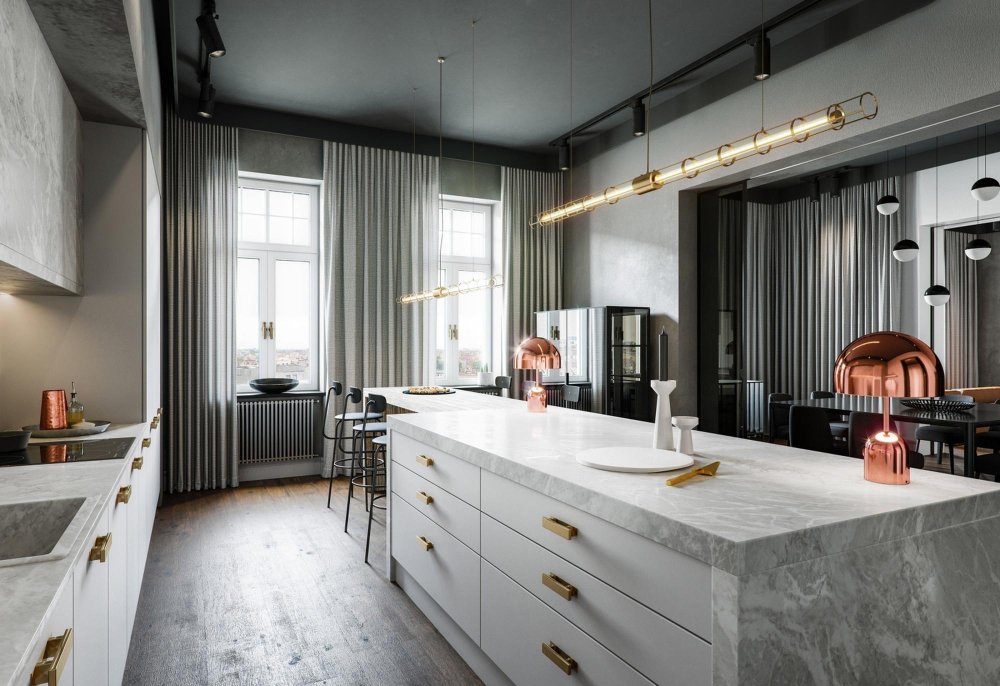Restoring a home is an exciting journey—whether you’re bringing a historic property back to life or upgrading an older home for modern comfort. But beyond aesthetics, energy efficiency should be at the heart of every home restoration project. With the right upgrades, you can reduce energy costs, enhance comfort, and make your home more sustainable.
This minimal and clean guide provides rich, descriptive insights into the best energy-saving upgrades to incorporate into your home restoration.
Why Energy Efficiency Matters in Home Restoration
Energy-efficient upgrades go beyond reducing monthly utility bills—they enhance the long-term value, sustainability, and comfort of your home. Here’s why energy-saving renovations are essential: ✔ Lower Utility Costs – Reduce electricity, gas, and water usage. ✔ Improved Comfort – Maintain consistent indoor temperatures year-round. ✔ Sustainable Living – Minimize your carbon footprint and help the environment. ✔ Increased Property Value – Energy-efficient homes are more attractive to buyers. ✔ Rebates & Incentives – Many governments offer financial incentives for energy-efficient home upgrades.
💡 Pro Tip: Before starting your restoration, get a home energy audit to identify the best areas for improvement..

1. Insulation & Air Sealing: The Foundation of Efficiency
An energy-efficient home starts with proper insulation and air sealing. If you’re restoring an older home, chances are it has gaps, leaks, and outdated insulation. Fixing these issues will prevent energy loss and reduce heating and cooling costs.
✔ Upgrade Wall & Attic Insulation – Spray foam, fiberglass, or cellulose can increase efficiency by up to 30%. ✔ Seal Air Leaks – Use caulk and weatherstripping to prevent heat loss around windows and doors. ✔ Install a Vapor Barrier – Prevents moisture buildup that can lead to mold and energy loss. ✔ Consider Energy-Efficient Windows – Look for double or triple-pane windows with low-emissivity (Low-E) coatings.
💡 Pro Tip: Historic homes can benefit from interior storm windows, which improve efficiency without altering the home’s appearance.
2. Smart HVAC Upgrades for Maximum Comfort
Older HVAC systems are often inefficient and costly to run. Replacing or upgrading your heating, ventilation, and air conditioning (HVAC) system can drastically cut energy costs.
✔ Upgrade to a High-Efficiency HVAC System – Look for Energy Star-certified heating and cooling units. ✔ Install a Smart Thermostat – A Wi-Fi-enabled thermostat learns your schedule and adjusts settings for maximum efficiency. ✔ Improve Ductwork Sealing – Sealing leaky ductwork prevents up to 20% energy loss. ✔ Consider a Heat Pump – These systems provide efficient heating and cooling while using less electricity.
💡 Pro Tip: Zoning systems allow you to heat and cool specific areas of your home, saving even more energy.


3. Energy-Efficient Lighting: Small Change, Big Impact
Switching to LED lighting is one of the easiest and most cost-effective ways to improve energy efficiency in a home restoration.
✔ Use LED Bulbs – They use 75% less energy and last 25 times longer than incandescent bulbs. ✔ Install Smart Lighting – Motion sensors and dimmers help reduce unnecessary energy use. ✔ Choose Energy-Efficient Fixtures – Look for fixtures with Energy Star certification. ✔ Incorporate Natural Light – Skylights, solar tubes, and larger windows reduce the need for artificial lighting.
💡 Pro Tip: Adding reflective surfaces like mirrors and glass elements helps spread natural light throughout your home.
4. Water-Saving Fixtures & Appliances
Reducing water waste is another key aspect of an energy-efficient home restoration.
✔ Install Low-Flow Faucets & Showerheads – Reduces water usage by up to 50% without sacrificing performance. ✔ Upgrade to an Energy-Efficient Water Heater – Tankless or heat pump water heaters save significant energy. ✔ Choose Water-Saving Toilets – Dual-flush and low-flow toilets use less water per flush. ✔ Opt for Energy Star Appliances – Dishwashers and washing machines with Energy Star ratings use less water and electricity.
💡 Pro Tip: Consider rainwater collection systems for landscaping to further reduce water consumption.
Read More in Budget Kitchen Essentials Blog
- Finding the Best Kitchen Showrooms Near Me: A Story of Style & Smart Savings
 Planning a kitchen remodel? Visit top kitchen showrooms near you to explore styles, compare appliances, and score the best deals on cabinets and countertops.
Planning a kitchen remodel? Visit top kitchen showrooms near you to explore styles, compare appliances, and score the best deals on cabinets and countertops. - Energy-Efficient Bathroom Remodel in Roseville: Save Money & Upgrade Your Space
 Planning a bathroom remodel in Roseville? Learn how energy-saving fixtures, smart technology, and eco-friendly materials can reduce costs while enhancing comfort and sustainability.
Planning a bathroom remodel in Roseville? Learn how energy-saving fixtures, smart technology, and eco-friendly materials can reduce costs while enhancing comfort and sustainability. - Home Restoration with Energy-Saving Upgrades: A Guide to a More Efficient and Sustainable Home
 Planning a home restoration? Learn how to integrate energy-saving upgrades like insulation, smart HVAC systems, and solar power to create a sustainable and cost-efficient home.
Planning a home restoration? Learn how to integrate energy-saving upgrades like insulation, smart HVAC systems, and solar power to create a sustainable and cost-efficient home.
5. Renewable Energy & Solar Power
If you want to take your energy-saving efforts to the next level, incorporating renewable energy solutions into your home restoration can lead to long-term cost savings and sustainability.
✔ Install Solar Panels – Generates clean electricity, reducing dependence on the grid. ✔ Use Solar Water Heaters – Reduces water heating costs by up to 80%. ✔ Consider Geothermal Heating & Cooling – Uses underground energy for high-efficiency temperature regulation. ✔ Install a Home Battery System – Stores solar energy for use during peak hours.
💡 Pro Tip: Check for solar incentives and rebates in your area—many states offer tax credits for installing renewable energy solutions.
Final Thoughts: A More Energy-Efficient Home Restoration
Restoring a home isn’t just about upgrading aesthetics—it’s an opportunity to create a comfortable, energy-efficient, and cost-effective living space. Here’s a quick recap of the top energy-saving upgrades: ✔ Insulation & Air Sealing – The foundation of an energy-efficient home. ✔ Smart HVAC Systems – Reduce heating and cooling costs with modern technology. ✔ Energy-Efficient Lighting – Cut electricity bills with LED and smart lighting solutions. ✔ Water-Saving Fixtures – Reduce water waste without sacrificing convenience. ✔ Renewable Energy Options – Solar panels and geothermal systems add long-term value.
By incorporating these energy-saving solutions into your home restoration, you’ll create a comfortable, eco-friendly, and cost-efficient home for years to come.

